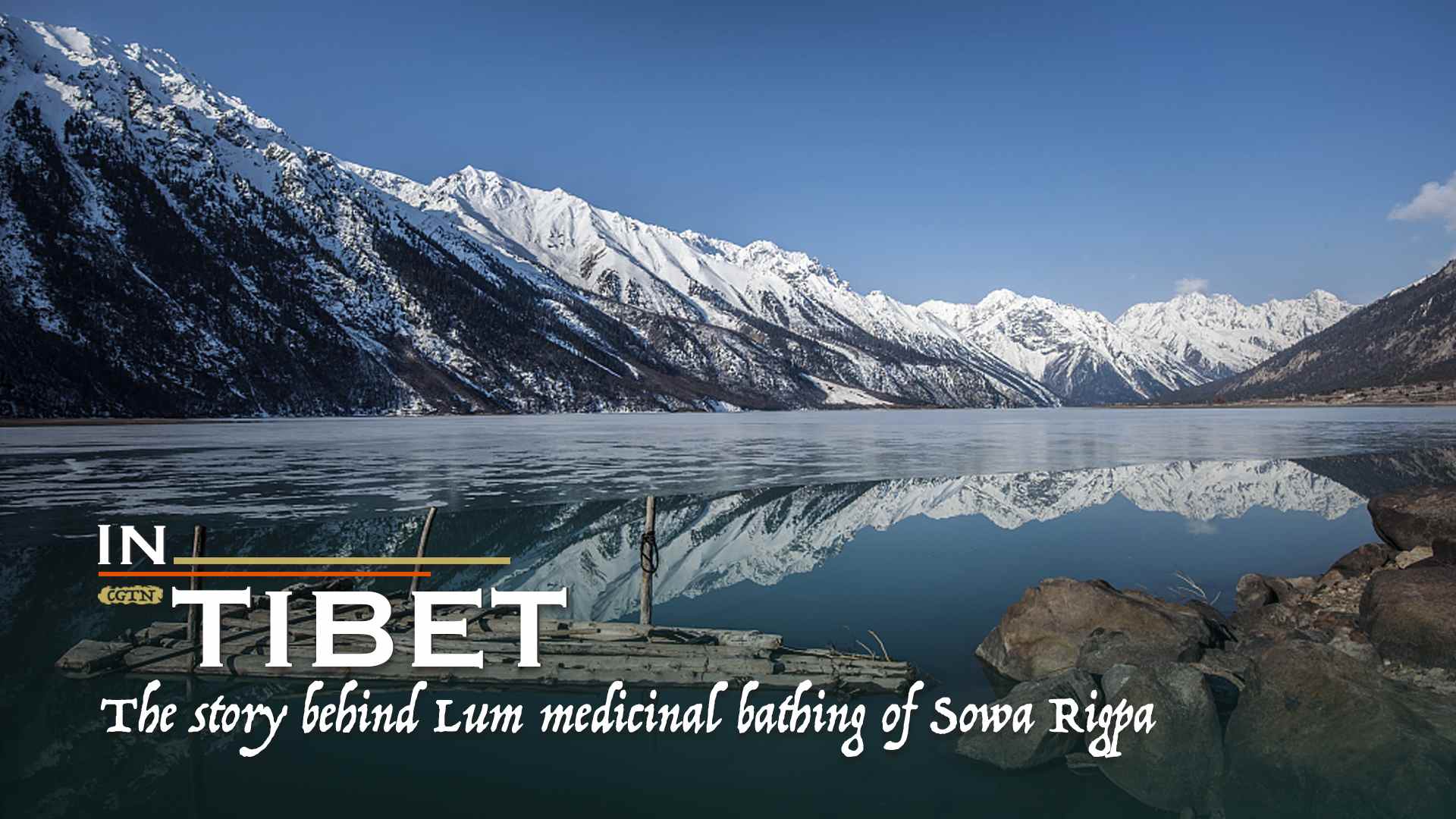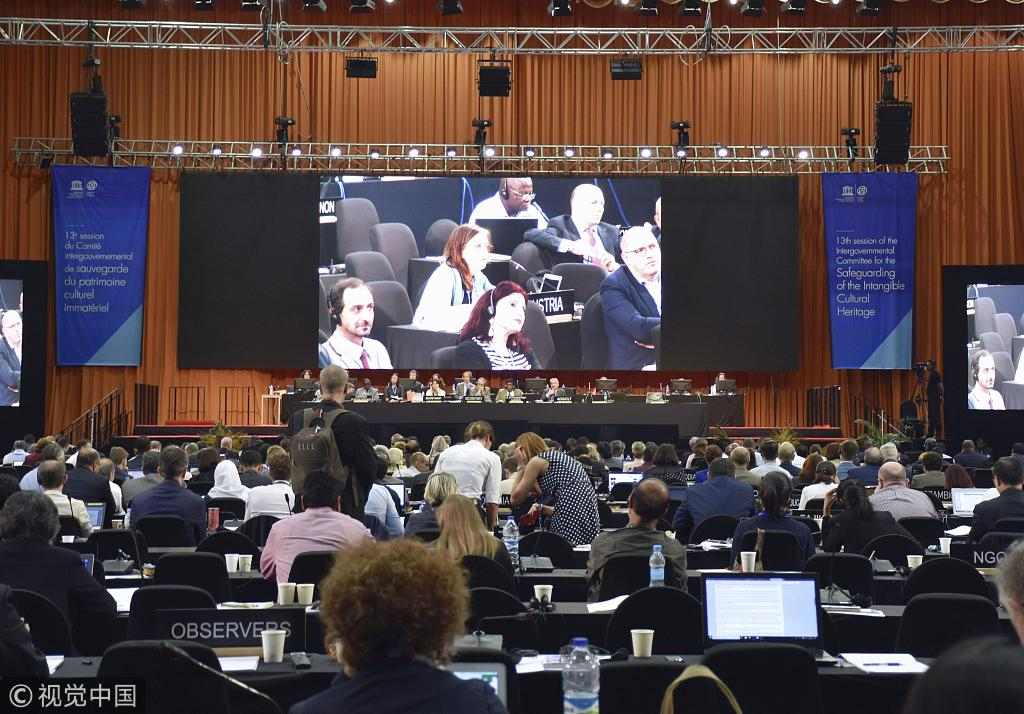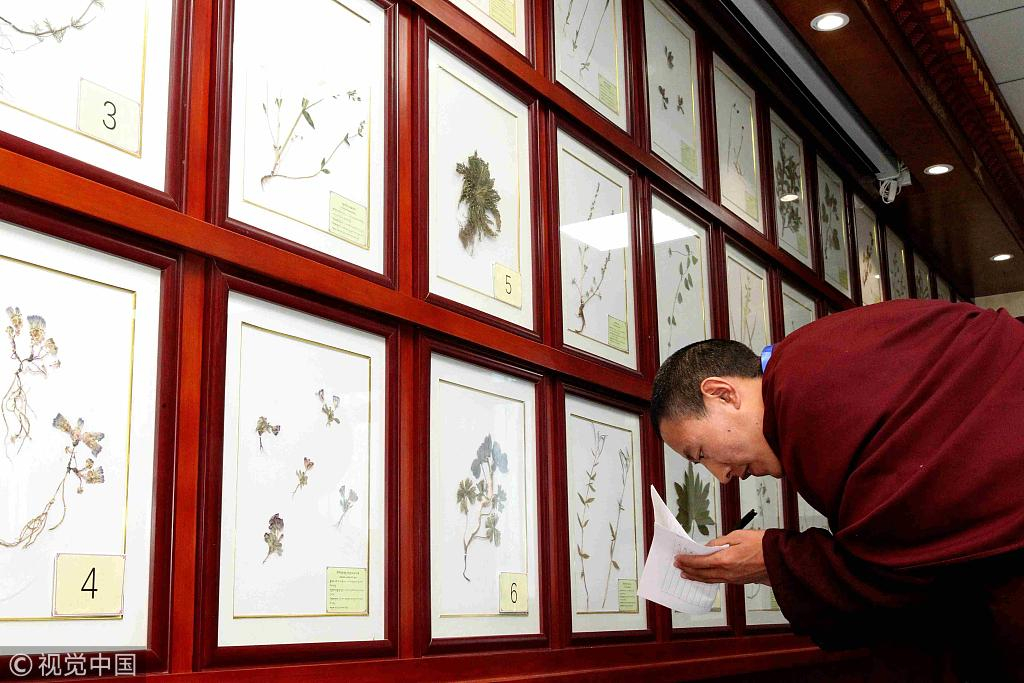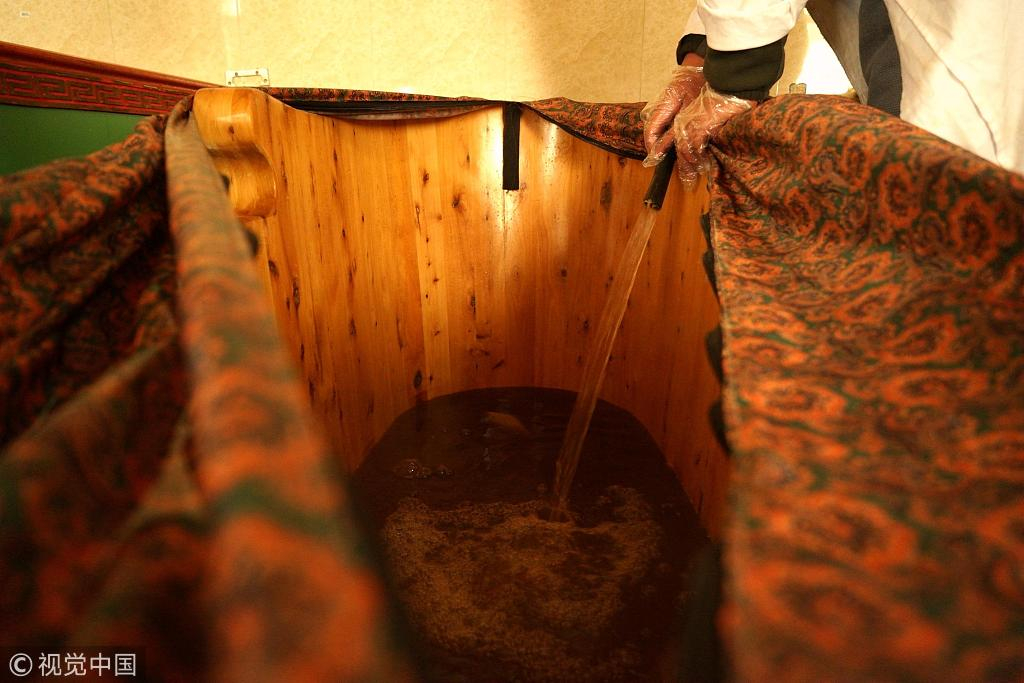
Culture China
08:00, 24-Mar-2019
In Tibet: The story behind Lum medicinal bathing of Sowa Rigpa
By Ye Qing

Tibetan medicinal bathing, or Lum medicinal bathing of Sowa Rigpa (Tibetan medicine), is the knowledge and practices concerning life and illness treatments among those residing in Tibetan areas. It was added to the Representative List of the Intangible Cultural Heritage of Humanity by the U.N. Educational, Scientific and Cultural Organization (UNESCO) in November 2018.
In fact, the "Lum medicinal bathing of Sowa Rigpa," for the purpose of applying for the list of intangible heritage, has to begin with the application for an intangible heritage of Tibetan medicine.

The UNESCO holds an intergovernmental committee meeting in Port Louis, Mauritius, on Nov. 28, 2018. /VCG Photo
The UNESCO holds an intergovernmental committee meeting in Port Louis, Mauritius, on Nov. 28, 2018. /VCG Photo
It was reported that in 2006, Tibetan medicine was approved by the State Council of China to be included in the first batch of national intangible cultural heritage list. In 2014, the Tibet Autonomous Region submitted Tibetan medicine to the UN representative list of intangible cultural heritage.
However, in March 2017, India formally proposed to UNESCO that Tibetan medicine is included in the list of intangible cultural heritage as well. Since there are various theories about the origin of Tibetan medicine, some scholars believe that it originated in India, while others believe that it originated in China.
Dondrup, the head of the scientific research department of the Tibet Traditional Medical College, said that the Qinghai-Tibet Plateau is the birthplace of Tibetan medicine.

China Tibetan Medicine Identification Skills Competition is held in Qinghai Province, November 25, 2018. /VCG Photo
China Tibetan Medicine Identification Skills Competition is held in Qinghai Province, November 25, 2018. /VCG Photo
He said that according to historical documents, as early as the Shangshung period, also known as Zhangzhung, after the emergence of the indigenous Tibetan religion of Bon, the development of Tibetan medicine had been recorded in Shangshung script.
The development of the Bon religion preceded the introduction of Indian Buddhism into the Tibetan region, so Tibetan medicine was not developed after the introduction of Indian Buddhism. This view refutes the claim that Tibetan medicine originated in India.
Some experts have said that the rapid development of Tibetan medicine from its inception to now is all centered on Tibetan areas. However, some scholars said that Tibetan medicine is based on the local practice of Tibetan medicine, and has also absorbed some Ayurveda theory of India and traditional Chinese medicine.
As an important part of "Sowa Rigpa" in Tibetan medicine, the Lum medicinal bathing of Sowa Rigpa is widely distributed in Tibet Autonomous Region, Qinghai, Sichuan, Gansu and Yunnan provinces, with the Yarlung Valley on the Qinghai-Tibet Plateau and the Tibetan farming and pastoral areas as its concentrated inheritance areas. Also, it plays an important role in safeguarding the life and health of the Tibetan people and preventing and controlling diseases.

The staff prepare Tibetan medicine bath liquid for patients on November 29, 2018. /VCG Photo
The staff prepare Tibetan medicine bath liquid for patients on November 29, 2018. /VCG Photo
Approved by the State Council, projects related to the Lum medicinal bathing of Sowa Rigpa were included in the list of national representative intangible cultural heritage projects in 2008 and 2014 respectively.
According to The Paper, in the past four years, China's Lum medicinal bathing of Sowa Rigpa had successfully applied for the world intangible heritage, marking a milestone in the application of Tibetan traditional medicine.
You may also be interested in:
What does it mean to be a world intangible cultural heritage
Lum medicinal bathing of Sowa Rigpa is a kind of therapy with national characteristics in Tibetan medicine. The main method is to soak the whole body or the legs and feet in liquid medicine. With the dual effects of temperature and medicine, the pores are opened, and medicine ingredients are directly absorbed through the skin, and then distributed throughout the body to promote microcirculation, so as to achieve good therapeutic effects.
The inclusion of the Lum medicinal bathing of Sowa Rigpa in the intangible heritage list will help improve the visibility of the intangible cultural heritage as a whole and raise the society's awareness of its significance, The Paper reported.
The UNESCO commission resolution stated that the heritage project has been passed through generations through daily life, religious rituals, folkloric activities, and medicinal practices, and has also been incorporated into the curricula of modern medical colleges as a complement to formal education.
(Cover image made by Gao Hongmei.)

SITEMAP
Copyright © 2018 CGTN. Beijing ICP prepared NO.16065310-3
Copyright © 2018 CGTN. Beijing ICP prepared NO.16065310-3